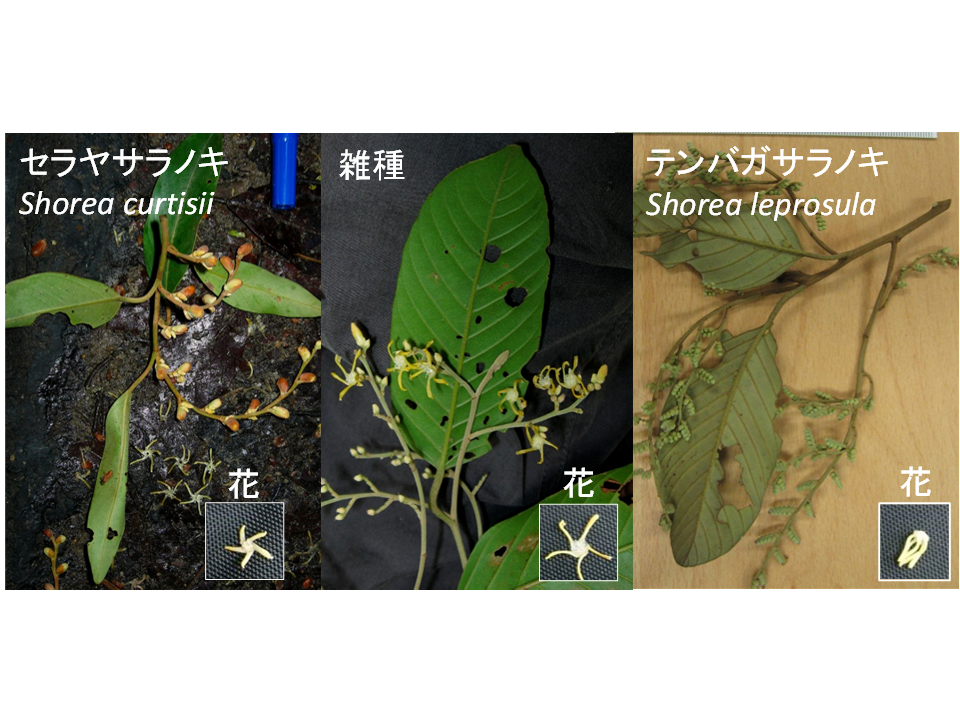Pick Up
888. Enhanced Adaptation of Tropical Rainforest Trees Through Hybridization

888. Enhanced Adaptation of Tropical Rainforest Trees Through Hybridization
The lush and diverse tropical rainforests of Southeast Asia are home to an incredible array of plant and animal species. Within this ecosystem, the forest canopy, which can reach heights of over 40 meters, is primarily dominated by Dipterocarpaceae trees, which are prized for their wood, particularly in the form of plywood, and are exported in significant quantities to Japan. There are approximately 500 different species of Dipterocarpaceae trees in Southeast Asia, with many closely related species coexisting in the same forest environments. In order for closely related species to grow in the same forest, a system is needed to prevent the species from interbreeding. In tropical rainforests, it is known that even among closely related species, the timing of flowering and the location of growth (slopes, ridges, etc.) are slightly different, so that hybridization does not occur and few hybrids are produced.
However, it is feared that the mechanism to prevent hybridization has become vulnerable due to the fragmentation of forests into smaller areas by human activities, which has reduced the number of parent trees, and climate change, which has gradually altered the flowering time and growing environment. Evidence of this vulnerability is found in a fragmented forest in Singapore, where over 20% of individuals of two Dipterocarpaceae tree species, each with fewer than 100 parent trees, were identified as hybrids, complete with hybrid flowering and fruiting events. Such hybridization poses a real threat to the continued existence of pure species, raising concerns about species extinction. On the other hand, hybridization is not always a bad thing. Recent studies have shown that hybrids can play an unexpected role in the evolution and survival of species. For example, in temperate oak species, hybridization exchanges genes with physiological functions between different closely related species. However, little is known about the function of hybridization in tropical rainforest trees.
In the future, tropical rainforests in Southeast Asia are expected to experience increased drought due to climate change. The ability to tolerate drought will therefore become more important for the survival of trees in the future. How will hybridization change drought tolerance? To answer this question, we focused on Seraya (Shorea curtisii), which is found on dry ridges in tropical rainforests, and Meranti tembaga (Shorea leprosula) and its hybrids, which prefer wet valleys. We also studied the drought tolerance and photosynthetic function of five types of seedlings, including hybrids produced by backcrossing these hybrids with their parent species. The results showed that Seraya was highly drought tolerant, consistent with its range, and Meranti tembaga was drought sensitive but had high photosynthetic capacity. On the other hand, hybrids including backcrosses were more drought tolerant and had higher photosynthetic capacity than Meranti tembaga, indicating that the photosynthetic capacity of Seraya is higher than that of Meranti tembaga. This suggests that backcrossing through hybrids is likely to result in the transfer of genes related to drought tolerance, for example, from Seraya to Meranti tembaga. At first glance, hybridization may seem undesirable for the preservation of pure species, but from another perspective it can be seen as a way for trees to survive by receiving genes from related species that have evolved in different ways that give them an advantage in survival. In addition, hybrids can help breed drought-tolerant forest species and create planted forests that are more resilient to climate change.
Reference
Tanaka Kenzo et al. (2023) Drought tolerance in dipterocarp species improved through interspecific hybridization in a tropical rainforest. Forest Ecology and Management. https://doi.org/10.1016/j.foreco.2023.121388
Picture caption:Flowers and leaves of Seraya and Meranti tembaga and their hybrids. The petals of Seraya are open, while those of Meranti tembaga are closed, thin, and twisted. The flowers of the hybrid are open, but the petals are twisted, showing a mixture of the forms of both species.
The JIRCAS International Symposium 2023, scheduled for Friday, November 17, will focus on tropical forest resilience and sustainability of the forest industry in Asia. Please consider attending this symposium as well.
JIRCAS International Symposium 2023: “Innovations to enhance the resilience of tropical forests and sustainability of the forest industry”
Symposium page:https://www.jircas.go.jp/en/symposium/2023/e20231117_jircas
Organizer: Japan International Research Center for Agricultural Sciences (JIRCAS)
Date:November 17 (Fri), 2023, 13:30-17:30 (JST)
Venue:Hybrid - U Thant International Conference Hall and online (United Nations University 3F, 5-53-70 Jingumae, Shibuya-ku, Tokyo 150-0001, Japan)
Registration Period: September 29 (Fri) 09:00 - November 16 (Thu) 17:00 (JST)
Registration page: https://www.jircas.go.jp/ja/symposium/2023/e20231117_jircas/entry
Participation fee: Free of charge
Contributor: TANAKA Kenzo (Forestry Division)
